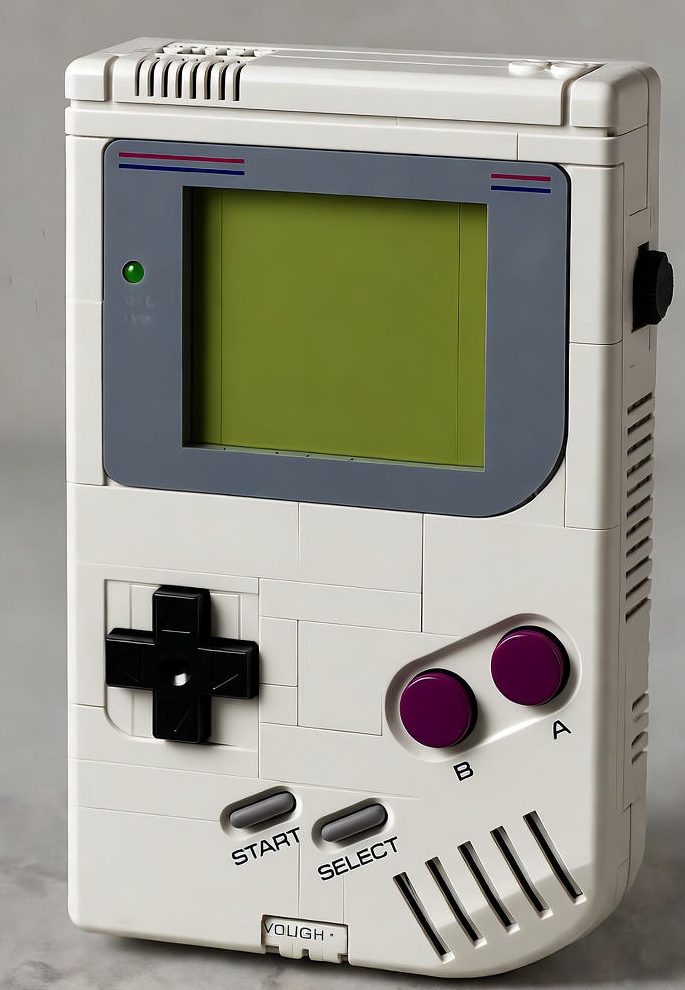The Nostalgia Trap: How LEGO’s Game Boy 74206 Exploits Your Childhood Memories (And Why It’s Working)
Introduction: When Retro Gaming Meets Building Blocks
The LEGO 74206 Game Boy didn’t just launch—it detonated across the collector landscape, immediately plunging into backorder status that reveals more about our psychological wiring than our shopping habits. This isn’t just another LEGO Nintendo set; it’s a masterclass in nostalgia marketing that preys on our collective childhood memories with surgical precision. The retro gaming LEGO phenomenon has evolved beyond simple recreation into something far more potent: a psychological bridge connecting adult disposable income to childhood yearning.
Why does this particular set trigger such frantic purchasing behavior when dozens of other LEGO collector electronics releases come and go with modest fanfare? The answer lies in the perfect storm of generational timing, impeccable design, and marketing that understands exactly which emotional buttons to push. We’re not just buying plastic bricks—we’re purchasing tangible fragments of our past, and LEGO knows it.
Background: The Evolution of LEGO Nintendo Sets
LEGO’s partnership with Nintendo began cautiously, testing waters with Mario-themed playsets before diving into the deep end of retro reverence. The LEGO Nintendo sets evolution mirrors our own cultural journey from seeing video games as childish distractions to recognizing them as artistic milestones worth preserving. Designers Carl Merriam and Simon Kent didn’t just create another building set—they engineered a time machine disguised as plastic bricks.
The LEGO 74206 Game Boy specifications read like a love letter to 1989: a \”nearly perfect 1:1 replica\” complete with interchangeable game cartridges and a buildable Tetris screen that triggers immediate recognition across multiple generations. Compared to other retro gaming LEGO products, this set crosses a threshold from toy to artifact—it’s the difference between building a model car and restoring a classic Mustang. The designers understood that true nostalgia requires authenticity, not just approximation.
Trend Analysis: Understanding LEGO Backorder Trends
The immediate backorder status of the LEGO Game Boy 74206 isn’t an accident—it’s a predictable outcome in today’s collector electronics market. Like limited-edition sneakers or vintage watches, high-demand LEGO sets now trigger feeding frenzies that would make Wall Street traders blush. The pattern mirrors cryptocurrency mania: perceived scarcity creates actual demand, which reinforces the scarcity in a self-fulfilling prophecy.
Community events like SHIPtember and endorsements from influential platforms like The Brothers Brick—which designated it their \”Pick of the Month for October\”—act as gasoline on an already blazing fire. This isn’t organic demand; it’s engineered desire amplified by social proof. The backorder trend reveals how LEGO has transitioned from children’s toy manufacturer to luxury goods curator, understanding that true value in the collector market often correlates directly with perceived accessibility issues.
Insight: The Psychology of Nostalgia Marketing
Let’s stop pretending this is about building techniques or piece count. The retro gaming LEGO phenomenon works because it bypasses rational thought and targets the emotional core of adults who once crouched in dimly lit bedrooms, desperately trying to beat their high score on Tetris. Nostalgia marketing isn’t subtle—it’s a psychological sledgehammer that transforms rational consumers into emotional buyers.
Consider this analogy: LEGO nostalgia products function like musical time machines. Just as hearing a song from your youth can instantly transport you back to specific moments, building the LEGO Game Boy 74206 recreates the tactile and visual sensations of childhood. The modded LEGO Game Boy that can actually play games—featured in The Brothers Brick’s coverage—demonstrates how far fans will go to bridge the gap between memory and reality. This intersection of gaming culture and building culture creates a powerful hybrid identity for collectors who see themselves as both preservationists and participants.
Forecast: Future of LEGO Collector Electronics
The LEGO 74206 Game Boy’s success isn’t an endpoint—it’s the starting pistol for an arms race in retro collector electronics. Future LEGO Nintendo sets will likely expand beyond handhelds to include home consoles, with the NES representing the obvious next frontier. The pattern suggests LEGO will continue mining the sweet spot between 1985-1995, targeting millennials now reaching their peak earning years.
The growing market for custom LEGO modifications—exemplified by the functional Game Boy mod—points toward a future where official sets become platforms for community innovation. LEGO’s factory expansion in Chesterfield County, highlighted in The Brothers Brick’s weekly roundup, may eventually ease availability issues, but the fundamental economics of nostalgia-driven collector electronics suggest that scarcity will remain a feature, not a bug. Long-term, the LEGO Game Boy 74206 will likely appreciate similar to vintage video games themselves—not because of inherent value, but because of the stories we attach to them.
Summary: Key Takeaways from the LEGO Game Boy Phenomenon
The LEGO 74206 Game Boy represents a perfect storm in modern marketing: authentic nostalgia meets manufactured scarcity, amplified by community endorsement and generational timing. Its immediate backorder status signals not just popularity, but the effectiveness of nostalgia marketing in the LEGO space when precisely targeted. The retro gaming LEGO collaboration success reveals uncomfortable truths about our consumption habits—we’re not just buying products; we’re purchasing permission to revisit our pasts.
The significance of community-driven demand in LEGO backorder trends cannot be overstated. From SHIPtember building competitions to The Brothers Brick’s coverage of the \”topping out ceremony for a new LEGO factory,\” the ecosystem surrounding these sets has become as important as the products themselves. As LEGO continues expanding its collector electronics line, the Game Boy phenomenon serves as both blueprint and warning: our childhood memories have become commodities, and companies are learning exactly how to price them.

